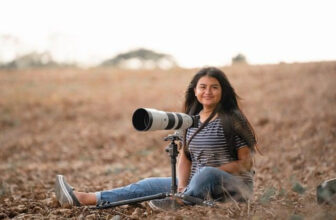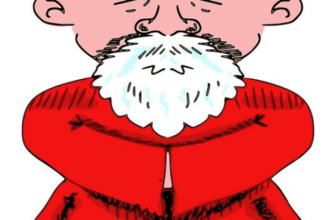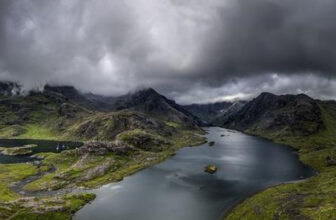Mastering Motion Blur Photography: Essential Tips
GoogleAds
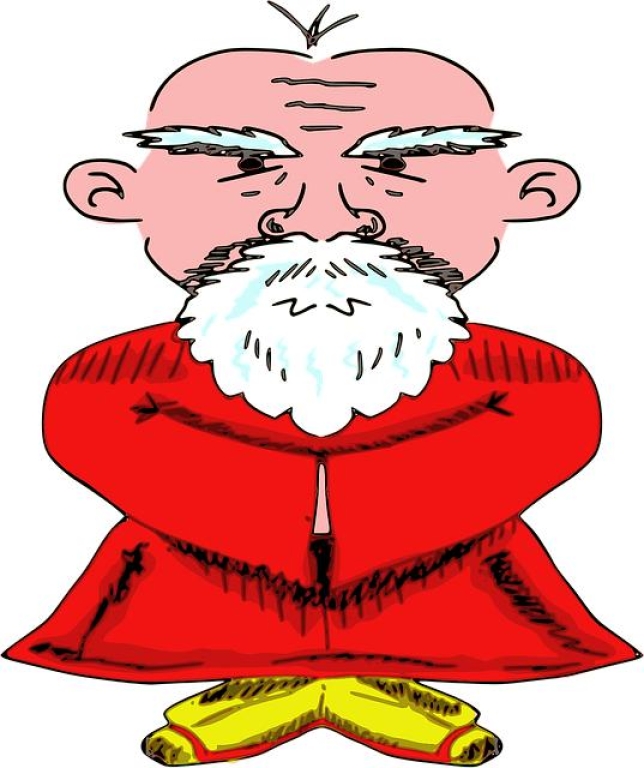
Motion blur photography can be a challenging yet rewarding form of art. Capturing movement in a still image requires a certain level of technique and precision. In this article, we will explore essential tips and tricks to help you master the art of motion blur photography. Whether you are a seasoned professional or a beginner, these tips will help you take your photographs to the next level.
Introduction
Motion blur photography is a technique that allows photographers to capture movement in a still image. By intentionally blurring parts of the image, photographers can convey a sense of speed and dynamism. Mastering this technique requires a combination of technical skill and artistic vision.
One of the key elements in creating compelling motion blur photography is choosing the right shutter speed. A slow shutter speed can create a smooth, flowing effect, while a fast shutter speed can freeze the action. Experimenting with different shutter speeds can help you achieve the desired effect in your photos.
Another important factor to consider when shooting motion blur photography is the direction of movement. Paying attention to the direction in which the subject is moving can help you create more dynamic and visually interesting images. Experiment with panning techniques to follow the movement of the subject and blur the background.
Composition also plays a crucial role in motion blur photography. By carefully framing your shot and considering the placement of the subject within the frame, you can create a sense of motion and depth in your images. Pay attention to leading lines, symmetry, and other compositional elements to enhance the impact of your motion blur photos.
In conclusion, mastering motion blur photography requires practice, experimentation, and a keen eye for detail. By understanding the technical aspects of shutter speed and composition, as well as developing your artistic vision, you can create stunning images that capture the beauty and energy of moving subjects. Embrace the challenge of motion blur photography and let your creativity soar.
Understanding Motion Blur
When it comes to mastering motion blur photography, understanding the concept of motion blur is essential. Motion blur occurs when there is movement in a scene that is captured by a camera. This movement causes the subjects in the photo to appear blurred, creating a sense of speed or dynamism. To achieve the perfect motion blur effect in your photography, there are a few key tips to keep in mind.
Choose the Right Shutter Speed: The shutter speed you select is crucial in creating motion blur. A slower shutter speed will result in more pronounced motion blur, while a faster shutter speed will freeze the action. Experiment with different shutter speeds to capture the desired amount of blur in your photos.
Use a Tripod: To prevent camera shake and ensure sharpness in areas of the photo that should be in focus, using a tripod is essential. A stable base will allow you to set a slower shutter speed without compromising the overall quality of the image.
Consider the Direction of Movement: The direction in which your subject is moving will have an impact on the type of motion blur you capture. Experiment with different angles and perspectives to enhance the sense of movement in your photos.
| Tip: | Adjust your aperture to control the depth of field in your photos and emphasize the motion blur effect. |
Embrace Creativity: Motion blur photography is a creative and artistic way to capture movement. Don’t be afraid to think outside the box and experiment with different techniques to achieve unique and visually striking results.
Camera Settings for Motion Blur
When capturing photos with motion blur, it’s essential to understand how your camera settings can affect the final outcome. By mastering these settings, you can create stunning images that convey a sense of movement and energy.
First and foremost, when shooting for motion blur, it’s important to set a slow shutter speed. This allows more light to enter the camera, resulting in a longer exposure time and creating the desired blur effect. Experiment with different shutter speeds to achieve the perfect amount of blur for your shot.
Additionally, adjusting the aperture can also impact the outcome of your motion blur photos. A wider aperture (smaller f-stop number) will create a shallower depth of field, emphasizing the movement in your image. On the other hand, a smaller aperture (larger f-stop number) will keep more of the scene in focus, but still allow for some blur in moving subjects.
ISO sensitivity is another crucial factor to consider when shooting for motion blur. A lower ISO setting is ideal for capturing smooth and vibrant blur, as it reduces the camera’s sensitivity to light. However, in low light situations, you may need to increase the ISO to maintain a properly exposed image while still achieving motion blur.
Lastly, don’t forget about stabilizing your camera to avoid unintentional blur caused by camera shake. Use a tripod or stable surface to keep your camera steady during longer exposures. Additionally, consider using a remote shutter release or setting a timer to minimize any movement that could affect the clarity of your motion blur shots.

Choosing the Right Shutter Speed
When it comes to capturing motion in photography, mastering the right shutter speed is essential. The shutter speed determines how long the camera’s shutter remains open, allowing light to hit the sensor. A faster shutter speed freezes motion, while a slower shutter speed captures motion blur. Understanding how to choose the right shutter speed can take your photography to the next level.
**Factors to Consider:**
- Subject’s Speed: Consider how fast your subject is moving. A faster shutter speed is needed for quickly moving subjects.
- Lighting Conditions: The amount of available light will affect the shutter speed you can use. In low light situations, a slower shutter speed may be necessary.
- Intended Result: Determine whether you want to freeze motion or capture motion blur in your photograph.
**Common Shutter Speeds**
| Shutter Speed | Effect |
|---|---|
| 1/1000 | Freezes fast motion |
| 1/100 | Blurs moderate motion |
| 1/10 | Creates significant motion blur |
**Experimentation is Key:**
- Don’t be afraid to experiment with different shutter speeds to see the effects they have on your photos.
- Practice capturing both sharp, frozen moments and artistic motion blur to develop your skills.
**Advanced Techniques:**
- Try panning with a slower shutter speed to create a sense of movement while keeping your subject in focus.
- Use a tripod to stabilize your camera at slower shutter speeds for crisp images with intentional motion blur.
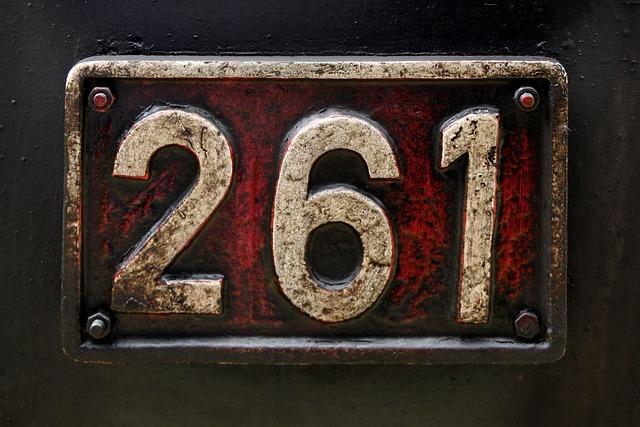
Techniques for Creating Dynamic Motion Blur
One of the most captivating techniques in photography is creating dynamic motion blur. Whether you’re shooting a fast-moving subject or looking to add a sense of movement to your photos, mastering motion blur can take your images to the next level. In this post, we’ll explore some essential tips and techniques for achieving stunning motion blur effects in your photography.
To start, it’s important to understand the basics of motion blur. Motion blur occurs when there is movement in the scene while the camera’s shutter is open. This results in a blurred effect that conveys a sense of speed and motion. To achieve this effect, you’ll need to adjust your camera settings and shooting techniques to capture the desired level of blur.
One key technique for creating dynamic motion blur is to use a slow shutter speed. This allows more time for movement to be captured during the exposure, resulting in a blur effect. Experiment with different shutter speeds to find the right balance between capturing motion and maintaining sharpness in your images.
Another important factor to consider when creating motion blur is the direction of movement. By panning with a moving subject, you can create a sense of speed and motion in your photos. Try tracking your subject as it moves across the frame, keeping it in focus while blurring the background for a dynamic effect.
In addition to adjusting your shutter speed and panning technique, you can also play around with different angles and compositions to enhance the sense of motion in your photos. Experiment with framing your subject off-center or incorporating leading lines to guide the viewer’s eye through the image. Remember, the key to successful motion blur photography is to practice, experiment, and have fun with it.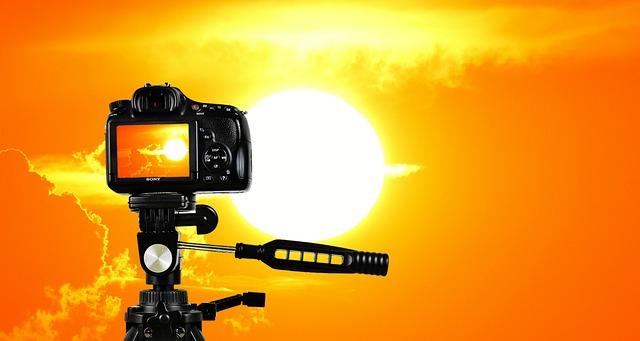
Utilizing Tripods and Stabilization Techniques
When it comes to capturing crisp and clear images, can make a world of difference. Whether you’re shooting in low light conditions or trying to freeze fast-moving subjects, having a steady base for your camera is essential. Here are some essential tips to help you master motion blur photography.
1. Invest in a Quality Tripod: A sturdy tripod is a must-have for any photographer looking to reduce motion blur in their images. Look for a tripod that is both lightweight and durable, with adjustable legs and a secure mounting plate.
2. Use a Remote Shutter Release: To further reduce camera shake, consider using a remote shutter release to trigger the camera without physically touching it. This small investment can make a big difference in the sharpness of your images.
3. Experiment with Different Stabilization Techniques: In addition to using a tripod, explore other stabilization techniques such as using a bean bag or leaning against a stable surface. These simple adjustments can help minimize unwanted camera movement.
4. Consider the Rule of Thirds: When composing your shots, keep the rule of thirds in mind to create dynamic and visually appealing images. Placing your subject off-center can add interest and depth to your photographs.

Post-Processing Tips for Enhancing Motion Blur Photos
Understanding Motion Blur Photography
In photography, motion blur is a technique used to capture the sense of movement in a still image. It can add a dynamic and artistic flair to your photos, making them more visually interesting and engaging. By mastering motion blur photography, you can create stunning images that evoke a sense of speed, energy, and excitement.
Choosing the Right Subjects
When capturing motion blur photos, it’s important to choose subjects that lend themselves well to this technique. Fast-moving objects such as cars, bicycles, runners, or flowing water can create beautiful motion blur effects. Experiment with different subjects to see what works best for you and your style of photography.
Using Slow Shutter Speeds
One of the key factors in creating motion blur photos is using slow shutter speeds. By slowing down the shutter, you allow more time for the subject to move within the frame, resulting in a blurred effect. Start by experimenting with shutter speeds between 1/30 to 1/4 of a second to achieve the desired amount of blur.
After capturing your motion blur images, there are several post-processing techniques you can use to enhance the effect and make your photos stand out even more. Here are some tips to help you master the art of post-processing motion blur photos:
- Adjust Exposure: Fine-tune the exposure levels to ensure that the subject stands out against the blurred background.
- Enhance Colors: Use color correction tools to make the colors pop and enhance the overall impact of the image.
- Sharpen Details: Apply selective sharpening to key areas of the photo to enhance clarity and focus.
Q&A
Q: What is motion blur in photography?
A: Motion blur occurs when an object or a portion of an image is not captured sharply due to movement during the exposure.
Q: Why is mastering motion blur important in photography?
A: Mastering motion blur allows photographers to convey a sense of movement and dynamism in their photographs, enhancing the overall impact and storytelling of their images.
Q: What are some essential tips for capturing striking motion blur photography?
A: Some essential tips include using a slow shutter speed, panning with the moving subject, utilizing a tripod for stability, and experimenting with different angles and compositions.
Q: How can photographers use motion blur to enhance their creativity and artistic vision?
A: By mastering motion blur, photographers can explore new creative possibilities, convey emotions and energy, and create visually captivating and unique images that stand out from the rest.
Q: What are some common mistakes to avoid when attempting motion blur photography?
A: Common mistakes include using shutter speeds that are either too fast or too slow, failing to consider the direction and speed of the moving subject, and neglecting to adjust exposure settings accordingly.
The Conclusion
In conclusion, mastering motion blur photography requires practice, patience, and attention to detail. By following these essential tips, photographers can capture dynamic and visually striking images that convey a sense of movement and energy. Whether you are a beginner or seasoned pro, incorporating motion blur into your photography repertoire can elevate your work to new heights. So grab your camera, experiment with different techniques, and unleash your creativity to capture the beauty of motion in a single frame. Happy shooting!
GoogleAds




